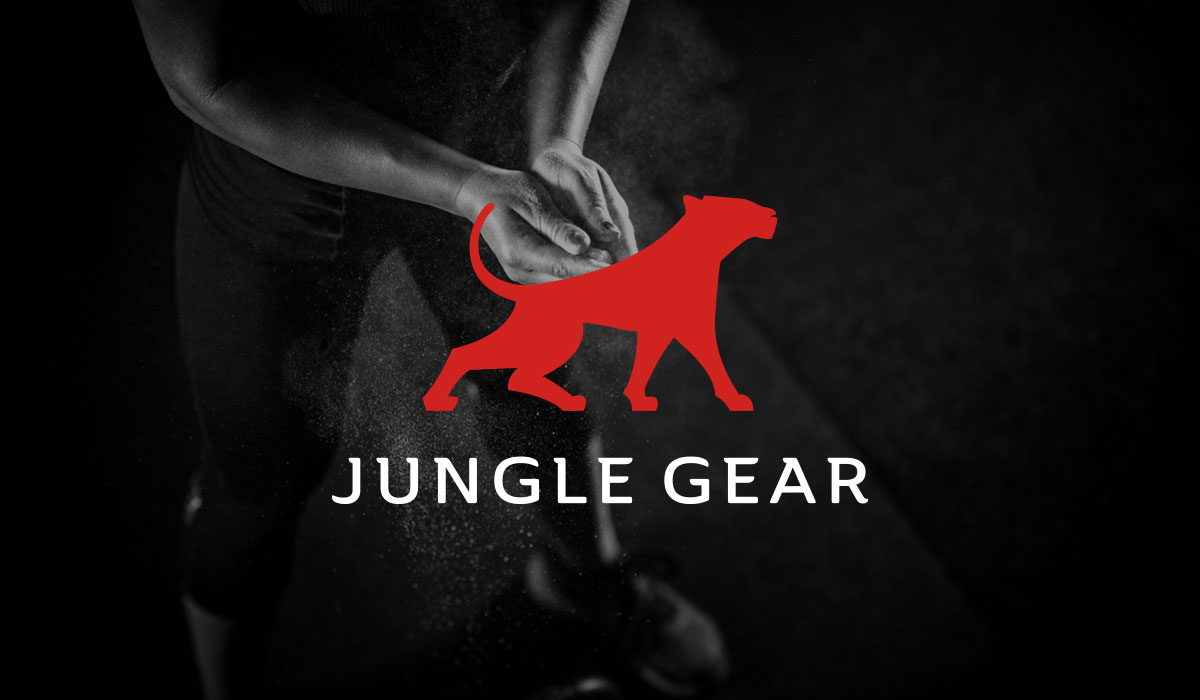Spellbrand Blog
How To Create Authentic Audience Personas

Let’s talk about something super cool called audience personas and why they are like your best friends in business. Imagine if you knew exactly what your best friend liked, what games they played, or even their favorite ice cream flavor. You’d know just how to make them smile, right? That’s what audience personas do for your business. They help you know your customers so well that you can make them happy every time.

What is an Audience Persona?
An audience persona is like a made-up character, similar to creating a character for a story, but this one is special because it helps you understand the people who might want to buy your products or get to know your brand.
Think of audience persona as crafting a detailed character in a book or a movie. This character isn’t a real person, but it represents a group of real people who share similar likes, dislikes, jobs, or hobbies.
When you create an audience persona, you start by giving this character a name to make them more relatable, like “Techie Tara” or “Fitness Fred”. You imagine what they look like and maybe even find a picture that looks like them. This helps you picture them in your mind as real as possible.
Next, you give them a life. Where do they live? What kind of job do they have? What are their daily struggles and what goals are they trying to reach? Maybe Techie Tara is an IT professional who lives in a city, loves staying updated with the latest tech trends, but gets frustrated by gadgets that are tough to use. Knowing this helps you figure out how to talk to Tara and others like her in a way that resonates and feels personal.
You also think about what makes them happy or worried. Perhaps Tara worries about spending too much money on tech gadgets that don’t work as promised. This insight allows you to craft messages or offers that speak directly to her concerns and desires, like showcasing the value and reliability of your products.
An audience persona allows you to step into your customers’ shoes and see the world from their perspective. This isn’t just guessing; it’s based on real data and insights from people who interact with your brand or could potentially interact with it.
Understanding their lives allows you to create marketing strategies, products, and messages that resonate with your target audience. This will make them feel like you know them and speak directly to them. This will attract them to your brand and build a stronger connection, encouraging loyalty and long-term engagement.

How to Create an Audience Persona
Collect Stories and Facts
Creating an audience persona begins with collecting as much information as possible about the people already interested in what you’re selling. Think of it as playing detective, where every little detail helps you understand the big picture.
Start by looking at your current customers. You can review their purchase history to see which products are favorites and which don’t get much attention. Also, look at any demographic data you might have, such as their age, gender, location, and even their job titles, if available. This information helps paint a picture of who is attracted to your brand and why they might be interested in your products.
Next, reach out directly with surveys. These can be simple questions sent via email or more detailed surveys on your website. Ask them about their shopping preferences, lifestyle, interests, and factors influencing their buying decisions. For example, you might determine whether they value quality over price or prefer eco-friendly products.
Social media is another goldmine for gathering stories and facts. Pay attention to the comments and discussions on your posts and posts within your industry. Look at the kinds of content they share or engage with the most. This can tell you what topics are hot and what concerns or excites your audience.
Finally, consider setting up interviews with a few willing customers. A direct conversation can reveal in-depth insights that surveys and social media monitoring might not catch. You’ll hear first-hand what challenges they face, what they wish for, and how your brand might help fulfill their needs.
This stage is all about gathering as much authentic data as possible. The richer the data, the more accurate your audience personas will be, allowing you to tailor your marketing strategies effectively.
Imagine Their Day-to-Day Life
To connect with your audience, you need to walk a mile in their shoes. Imagine a typical day in your persona. What time do they wake up? What’s their morning routine like? Understanding these everyday details helps you grasp when and how to reach them effectively.
Consider the challenges they face regularly. For instance, if your persona is a busy parent, they might struggle to balance work and family time. Or, if they’re young professionals, perhaps they face long commutes or stressful work environments. Knowing these pain points allows you to think about how your products or services can offer solutions or relief.
Also, think about what brings them joy and satisfaction. Maybe it’s spending time with family, enjoying hobbies, or accomplishing career goals. These insights can guide you in crafting messages that resonate emotionally and motivate your audience by aligning your offerings with their sources of happiness.
By imagining your customers’ day-to-day lives, you create empathy within your marketing team. This empathy translates into more sensitive and effective communication strategies that speak directly to your customers’ needs and desires.
Give Them a Name and a Story
Once you grasp your audience’s data and daily life, the next step is to bring your audience persona to life by giving them a name and a backstory. This is where you transform the raw data into a relatable character, making it easier for your marketing team to visualize and remember.
Naming your persona, like “Gadget Guru Gary,” instantly humanizes the data. It helps your team think of them as a real person rather than just a set of statistics. Assign characteristics based on your research—perhaps Gary is in his mid-30s, lives in an urban area, and always looks for the latest technological advancements to boost his productivity and entertainment.
Create a story around Gary’s lifestyle. Maybe he’s a tech-savvy professional who relies heavily on gadgets for work efficiency and personal enjoyment. He could also value quality and innovation and be willing to pay a premium for the best. Understanding his motivations helps craft marketing messages and product offers that appeal directly to his interests and needs.
Giving your persona a name and a story makes them memorable and relevant. This narrative approach makes it easier for your team to relate to and remember the persona and aids in brainstorming targeted marketing strategies that effectively speak to the heart of what Gary and similar customers care about.
Use Pictures
Adding a visual element to your persona can significantly enhance the realism and impact of the character. Once you’ve established who “Gadget Guru Gary” is, find a picture that embodies his characteristics. This could be an image of someone who looks like the age and lifestyle you imagine Gary has. The picture might show someone in a modern office, at a tech store, or using a gadget at home.
Seeing a visual representation helps your team better relate to and think about Gary as a real person. When creating marketing materials, designing products, or crafting messages, having Gary’s picture visible makes it easier to ask, “Would Gary like this? How would this image, message, or feature make Gary feel?” It solidifies the persona as a constant reference point in the development process, ensuring that the decisions you make align closely with the preferences and needs of your target audience.
Write Down What Matters to Them
It’s crucial to identify and document what’s important to your persona. For “Gadget Guru Gary,” you might note that he values ease of use in technology, innovation, and efficiency. Listing these priorities helps your team focus on creating products and messages that resonate with Gary’s needs and desires.
Writing down these details is a product development and marketing strategy guideline. For instance, knowing Gary prefers user-friendly tech can direct your product design team to prioritize simplicity and intuitive interfaces. For marketing, this information guides the creation of content that highlights ease of use, quick setup, and hassle-free technology, all of which speak directly to Gary’s preferences.
By keeping a clear list of what matters to your persona, you ensure that every decision made—from product design to marketing campaigns—is tailored to appeal to the real and specific needs of your target audience, enhancing the effectiveness of your efforts and deepening customer engagement.

Why Audience Personas Matter
Better Messages
By developing a clear picture of your audience persona like “Gadget Guru Gary,” you’re able to craft marketing messages that are much more effective. Knowing specific details about Gary, such as his love for tech-related humor, allows you to tailor your ads, emails, and social media posts to include elements that catch his interest.
A well-placed tech joke, for instance, not only captures his attention but also makes the communication feel personalized. This targeted approach ensures that your messages resonate deeply, increasing the likelihood of engagement and response from Gary and others like him.
Find the Right People
Understanding your persona helps identify where to focus your marketing efforts to reach more people like Gary. If Gary frequents certain tech blogs or specific social media platforms, those are the places you want to have a presence.
This strategic placement of your marketing materials means you’re more likely to engage with prospects with similar interests and behaviors, making your marketing efforts more efficient and cost-effective. You’re not just casting a wide net and hoping for the best; you’re targeting your efforts where they will have the most impact.
Create Products They Love
Knowing your persona’s preferences and pain points, like Gary’s dislike for complicated technology, guides your product development process. This insight allows you to design products that directly address the needs and wants of your target audience.
For example, emphasizing simplicity and ease of use in your gadgets can appeal to Gary and others who share his frustrations. This not only leads to higher satisfaction among your customers but also strengthens your brand’s reputation for understanding and meeting customer needs.
Keep Them Coming Back
When Gary sees that your products and messages consistently reflect an understanding of his needs and interests, he feels valued and understood. This emotional connection is crucial for building customer loyalty.
Gary is likelier to return to a brand he feels “gets him” and looks forward to your next offer. This ongoing relationship isn’t just about repeat business; it’s about creating brand advocates who believe in your products and share their positive experiences with others, thus extending your reach and influence.
By building and utilizing audience personas effectively, you ensure that every aspect of your business, from product development to marketing, is aligned with your customers’ needs and desires, driving success and growth.
Creating audience personas is like making a bunch of new friends. You learn about them, understand them, and then do your best to keep them happy. It’s a powerful tool that ensures you’re not just shouting into a crowd but talking right to the people who want to listen.
So, go ahead and start making some new friends for your business!

Mash Bonigala
Creative Director & Brand Strategist
With 25+ years of building brands all around the world, Mash brings a keen insight and strategic thought process to the science of brand building. He has created brand strategies and competitive positioning stories that translate into powerful and stunning visual identities for all sizes of companies.
Featured Work
See Our Work in Action
Real brands, real results. Explore how we've helped businesses transform their identity.
Client Love
What Our Clients Say
Don't just take our word for it. Hear from the brands we've worked with.
Ernest Bannister
M.O.R.E
"My experience with the Spell brand team has been nothing short of excellent. From the beginning Mash and team made me feel very comfortable with the design process. I am extremely happy with the results of my design and look forward to working with Spellbrand; exclusively! I have told many family, friends and peers about the great work the Spellbrand team has done in creating my design. Thanks again for all your patience and professionalism; I look forward to working with you in the future."
Raymond Chen
RLC Global Archicom, Singapore
"SpellBrand was very accommodating from the beginning of the design process even when we had distinct design ideas, being architect designers ourselves. Jeff responded with many preliminary style options based on our initial sketchy ideas, enabling us to zoom in on the specific feel we were looking for. From that point on, it was just refinement and the final logo was in our hands in a matter of days. We have used SpellBrand on other logos for my clients projects."
Related Services You Might Love
Based on what you just read, here are services that can help you achieve similar results for your brand.
Keep Reading
Related Articles
Nov 19, 2025
What are paths and anchor points in Adobe Illustrator?
Master the fundamentals of paths and anchor points in Adobe Illustrator. Learn how these essential tools work together to create professional logo designs and vector graphics.
Read MoreNov 17, 2025
Use Of Color In Creating Logo Designs
Master the psychology of color in logo design. Learn how colors influence perception, build brand recognition, and create emotional connections with your audience.
Read MoreNov 17, 2025
Developing a Jewelry Logo
Learn how to create a jewelry logo that captures elegance and sophistication. Discover design strategies, typography choices, and color palettes that work for jewelry brands.
Read More

